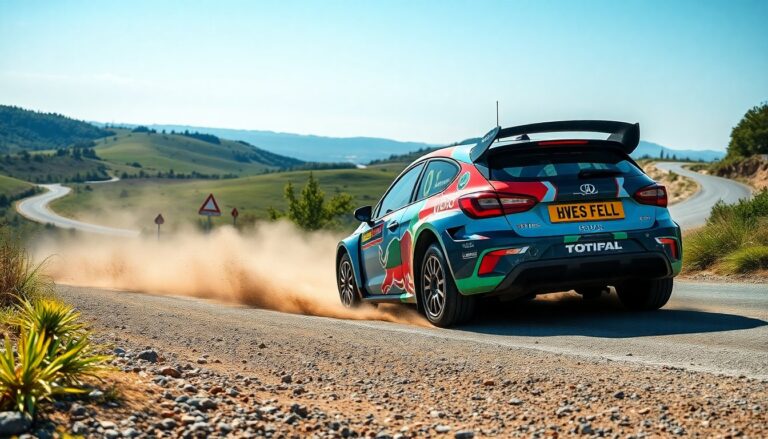Argomenti trattati
The world of rally racing captivates motorsport enthusiasts globally, combining speed, skill, and strategy. Unlike traditional circuit racing, rally racing occurs on diverse terrains, including tarmac and gravel. Drivers face stages filled with sharp turns and unpredictable conditions, challenging both their abilities and those of their navigators. This article examines the history of rally racing, its key events, and the elements that contribute to its excitement.
The origins of rally racing
Rally racing has its roots in the early 20th century as automobile manufacturers aimed to showcase the durability and performance of their vehicles. The first organized rally occurred in 1911 with the Glidden Tour, which spanned the United States from New York to San Francisco. As the sport gained traction, it attracted international attention, leading to significant events like the Monte Carlo Rally in 1911 and the Rallye Automobile Monte-Carlo in 1914.
Evolution through the decades
Over the years, rally racing has transformed significantly. In the 1960s and 1970s, manufacturers such as Ford and Peugeot developed vehicles specifically for rally stages. The introduction of Group B in the early 1980s revolutionized the sport, enabling the use of more powerful cars and exciting competitions. However, the extreme speeds and perilous conditions led to tragic accidents, prompting the FIA (Fédération Internationale de l’Automobile) to eliminate the Group B category in 1986.
Major rally racing events
Rally racing features several prestigious events that attract participants and spectators worldwide. One of the most notable is the World Rally Championship (WRC), which includes a series of rallies across different continents. Each rally consists of multiple stages, where drivers compete against the clock. The WRC has played a crucial role in popularizing rally racing, showcasing cutting-edge technology and driving talent.
The Monte Carlo Rally
The Monte Carlo Rally is often regarded as the crown jewel of rally racing. Renowned for its challenging winter conditions and breathtaking mountain scenery, drivers navigate treacherous roads that may be covered in ice and snow. Tire selection becomes a critical factor in this event, which has a rich history featuring legendary drivers like Colin McRae and Sébastien Loeb.
The Dakar Rally
The Dakar Rally is another prominent event on the rally calendar, known for its grueling off-road challenges. Originally held in Africa, the race now takes place in South America, testing the endurance of both machines and drivers. Participants face extreme conditions, traversing deserts, mountains, and rough terrains. The Dakar Rally serves as a true test of resilience and strategy, making it a highlight for rally enthusiasts.
The appeal of rally racing
The allure of rally racing stems from its combination of speed, danger, and unpredictability. Unlike circuit racing, where conditions are controlled, rally drivers must adapt to ever-changing environments. This demands not only exceptional driving skills but also effective collaboration with a navigator who provides vital information about upcoming turns and obstacles.
Moreover, rally racing fosters a strong sense of community among participants and fans. Events often occur in scenic locations, attracting spectators who appreciate the beauty of the landscapes alongside the thrill of competition. The camaraderie among teams, fans, and sponsors enhances the overall experience, making rally racing much more than just a sport—it embodies a lifestyle.
Rally racing exemplifies human skill and engineering excellence. Whether a seasoned fan or new to motorsports, the excitement and appeal of rally racing are evident. With its rich history, iconic events, and the unwavering spirit of competition, rally racing will continue to engage audiences for years to come.

